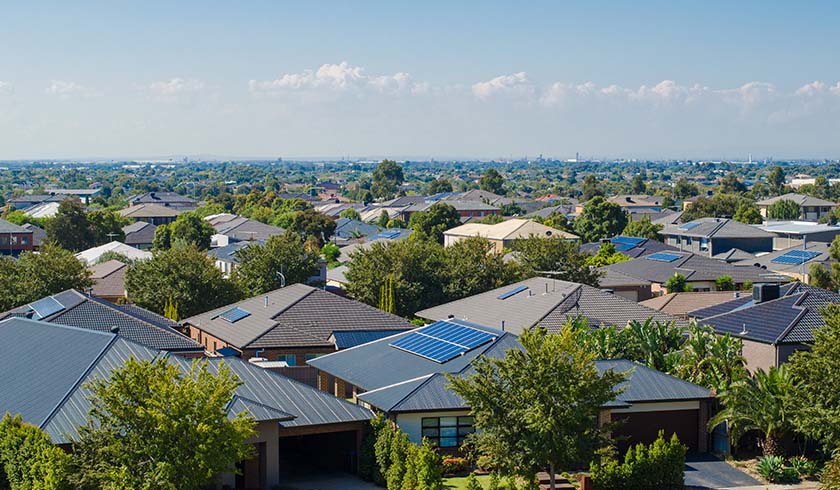Value of housing stock falls by $98bn
COVID-induced housing market weakness across Australia’s capital cities triggered a $98-billion slide in the total value of residential dwellings, new ABS data has revealed.

According to the Australian Bureau of Statistics’ (ABS) latest Residential Property Price Index, dwelling values across Australia’s eight capital cities fell 1.8 per cent in the three months to 30 June.
Melbourne recorded the sharpest quarterly decline (2.3 per cent), followed by Sydney (2.2 per cent), Darwin (1.4 per cent), Brisbane (0.9 per cent), Adelaide (0.8 per cent), Perth (0.7 per cent) and Hobart (0.4 per cent).
Canberra was the only capital city to record an increase in residential property prices over the June quarter, up 0.8 per cent.
As a result, the total value of Australia’s housing stock (10.5 million dwellings), fell by $98.2 billion to $7.1 trillion.
The ABS’ head of prices statistics, Andrew Tomadini, attributed the quarterly decline to the ongoing impact of the COVID-19 crisis on overall transaction activity.
“The number of residential property transactions fell substantially in the eight capital cities during the June quarter 2020, due to the effects of COVID-19 on the property market,” he said.
Prices continued to fall over the first two months of the September quarter, with property research group CoreLogic reporting a cumulative decline in combined capital city values of 1.3 per cent in July (0.8 per cent) and August (0.5 per cent).
CoreLogic’s head of research, Tim lawless, has said that while federal government stimulus and loan repayment holidays have helped soften the impact of the COVID-19 pandemic on the housing market, conditions would deteriorate further once such measures taper off.
“Considering fiscal stimulus polices are set to reduce at the end of this month and lenders will be conducting six-month check-ins with borrowers taking a repayment holiday, the downside risk to home values remains high,” he said.
“The federal budget, to be announced on [6 October], should help to provide further guidance on the direction of housing markets.
“Additional policy measures aimed at stimulating housing activity could help to support Australia’s economic recovery.”
AMP Capital chief economist Shane Oliver agreed, adding that prices would continue to fall over the next six to 12 months.
“High unemployment, the collapse in immigration – which has reduced underlying dwelling demand by around 80,000 dwellings a year – and the depressed rental market will likely combine to drive weak housing demand and increased forced sales into next year,” Mr Oliver said.
“JobKeeper, increased JobSeeker, bank payment holidays and other support measures have so far helped head off a sharp collapse in prices, but the market has still weakened anyway in Melbourne and Sydney, and we expect further falls as support measures start to be tapered from the December quarter.
“Sydney and Melbourne are the most vulnerable given their higher dependence on immigration, higher debt to income ratios, higher house price to income ratios, greater investor penetration and a possible preference shift away from expensive inner-city property.”
Mr Oliver continues to forecast an average peak-to-trough decline in home prices of 10 to 15 per cent, before stabilising in the second half of 2021.
This article was originally published on Smart Property Investment’s sister brand Mortgage Business.

